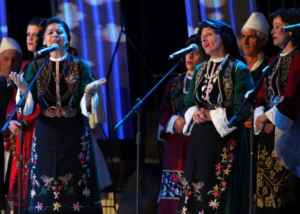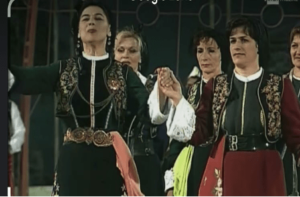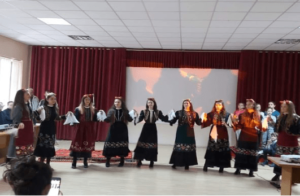By the late 19th and early 20th centuries, the dance was just sung. Following the creation of saze performance formations, which more or less corresponds to the urbanization of cities, dancing was performed with orchestral accompaniment. The sung dances can be a realm of both men’s and women’s performances. Sung dances come in various rituals and two-part, massy performances. Two-part dances are performed by two dancers and can be performed by women and men alike.
Overall, women’s dances emerge simple, both in structure and performance while retaining almost the same technique.
Sung dances are part of the popular folklore, and the spiritual heritage, and make up a special fund in the folklore of this district.
What is the sung dance like, concretely:
-The two-part sung dance comes in three voices.
The first takes it, the second returns it or picks it up to accompany the singer and the third fills it in with iso.
The three voices altogether follow a synchronized step.
Each verse reaches a climax, next a short pause, and the dance goes on again. The choreography features a linked circle dance performed to the singing of dancers revealing a spirit of togetherness, even though the song text may involve any elements of displeasure or resentment, which again demonstrates a feeling of unity and representation.




